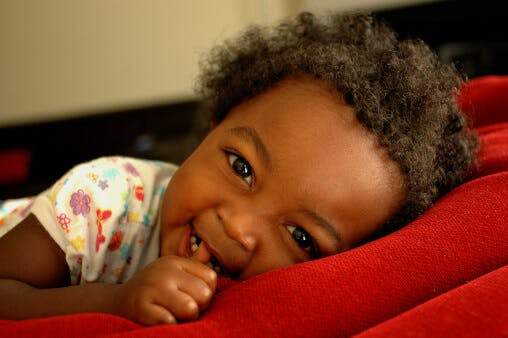What are Mongolian Spots?

Question
My daughter was born with a birthmark on her buttocks. The doctor said it is called a "Mongolian spot". Could you provide information on Mongolian spots, such as what causes them and how parents can deal with them? Thank you Dr. Greene.
A. Hafso - Alberta, Canada
Dr. Greene's Answer
Several years ago, I met a little girl who had been taken from her parents because authorities noticed that her body, especially her buttock, was covered with large, deep bruises. She and her parents were ripped from one another, for her own good. I can only imagine what they each felt. Child abuse charges were eventually dropped, when these “bruises” were correctly diagnosed as Mongolian spots.
These flat birthmarks can be deep brown, slate gray, or blue-black in color. They do sometimes look similar to bruises. The edges are often, but not always, indistinct. They are most common on the lower back and buttocks, but are often found on the legs, back, sides, and shoulders. They vary from the size of a pinhead to six inches or more across. A child may have one or several.
At least one Mongolian spot is present on over 90% of Native Americans and people of African descent, over 80% of Asians, over 70% of Hispanics, and just under 10% of fair-skinned infants (Clinical Pediatric Dermatology, 1993). Despite the name, Mongolian spots have no known anthropologic significance, except for being more common in darker-skinned infants.
Mongolian spots are nothing more than dense collections of melanocytes, the skin cells which contain melanin, the normal pigment of the skin. When the melanocytes are close to the surface, they look deep brown. The deeper they are in the skin, the more bluish they look. Either way, they are not related to bruises or any other medical condition. They do not predispose to skin cancer or any other problem.
Mongolian spots are present at birth, and most of them fade (at least somewhat) by age two. Most have completely disappeared by age five. If Mongolian spots remain at puberty, they are likely to be permanent. Fewer than five percent of children with Mongolian spots still have any by adulthood. Those who do tend to be the ones with multiple, widespread spots, or with spots in unusual locations.
If your daughter’s spot were in a very unusual location, I might suggest asking her physician to confirm the diagnosis. Since your daughter’s spot is on her buttocks, since these spots are entirely benign, and since most will disappear without trace, I would relax and wait. In the unlikely event that it is still present after puberty, there may (by then) be safe, painless, effective ways to remove them — if she should so choose.


